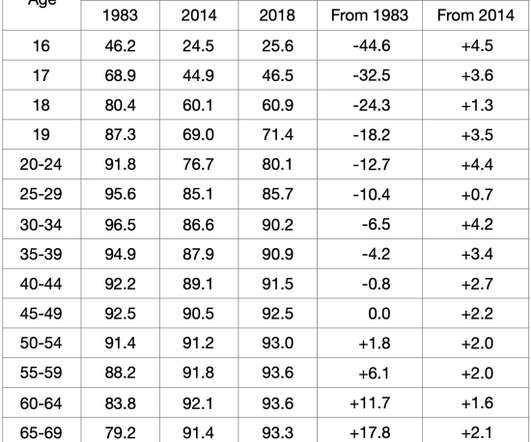Younger persons are still less likely to have a driver’s license than in the 1980s
Green Car Congress
JANUARY 6, 2020
Since 2011 , I have periodically examined changes in the proportion of persons with a driver’s license as a function of age. The previous study compared data for 1983 (as the baseline) with those for 2008, 2011, 2014, and 2017. That was followed by modest increases in the licensure for all age groups between 2014 and 2017.
























Let's personalize your content